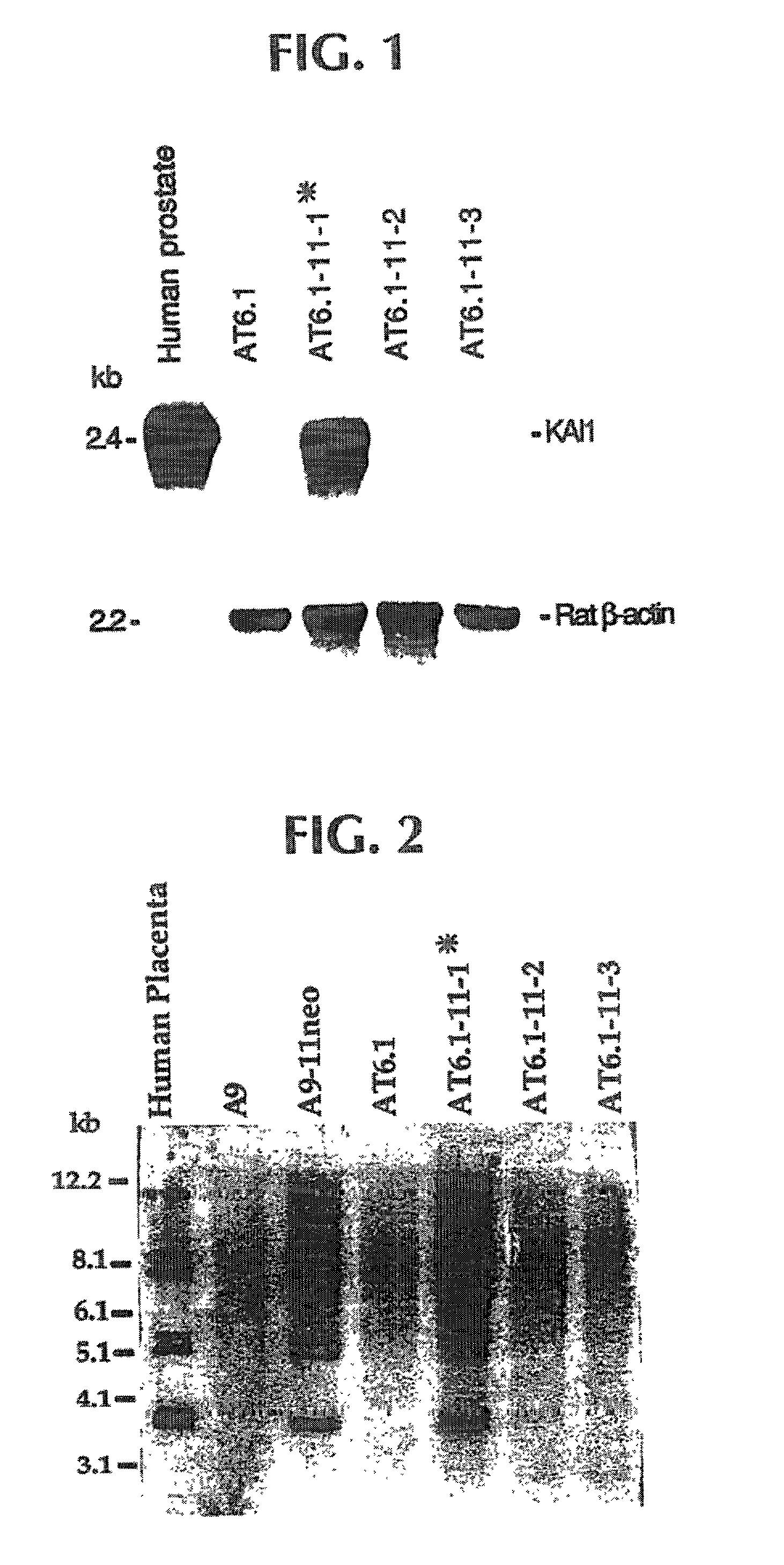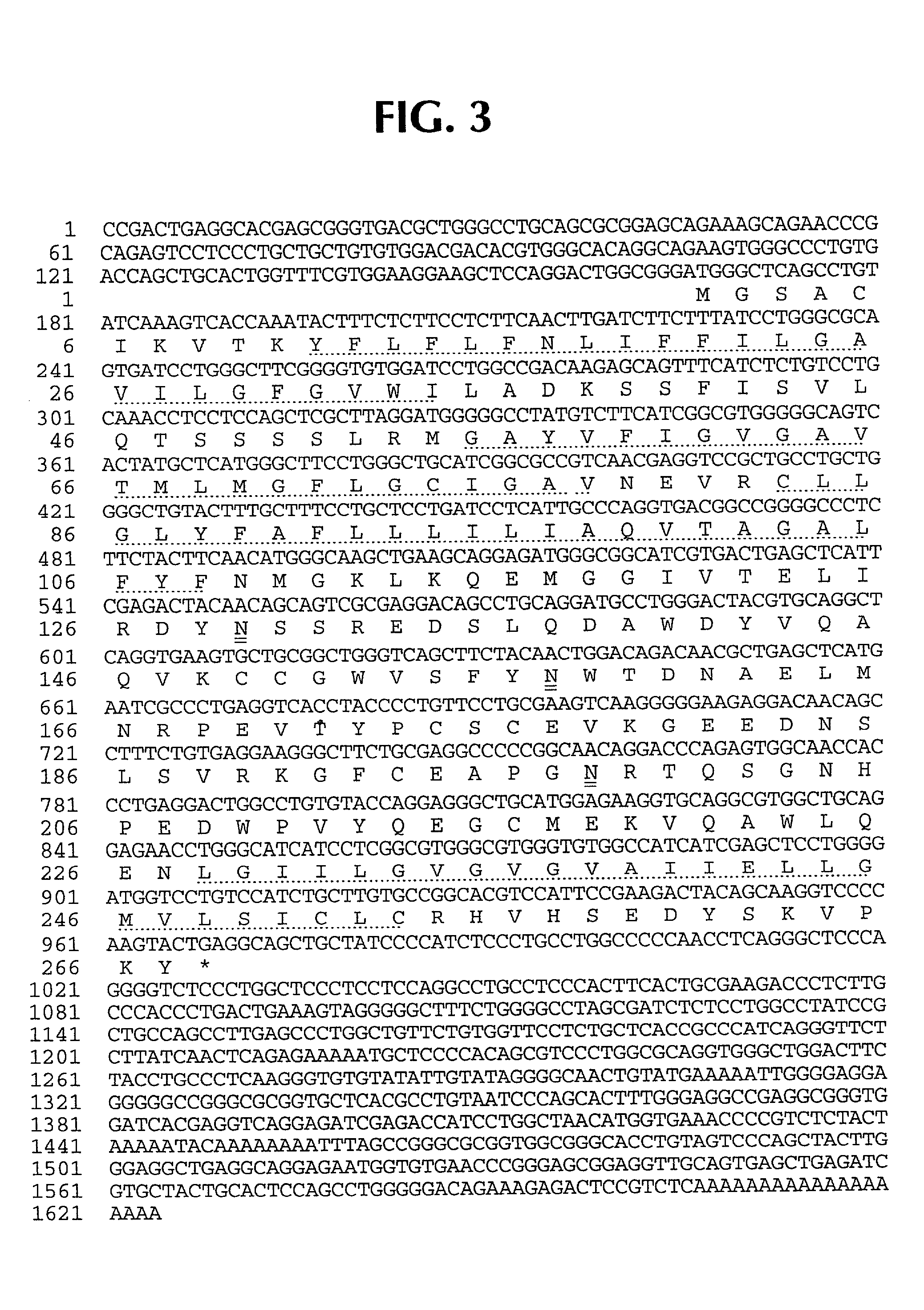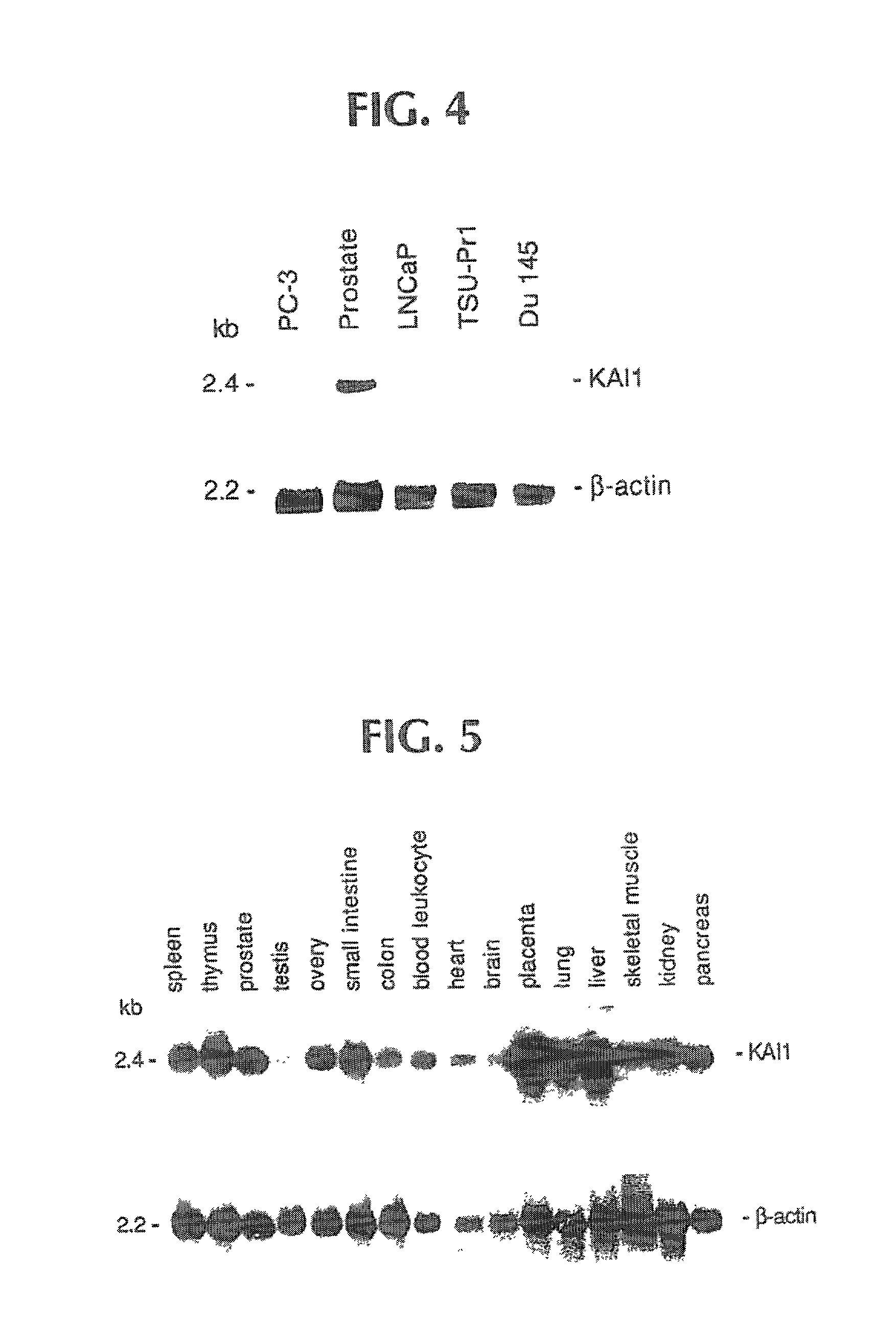Diagnostic methods and gene therapy using reagents derived from the human metastasis suppressor gene KAI1
a technology of human metastasis suppressor and gene reagent, which is applied in the direction of instruments, drug compositions, peptides, etc., can solve the problem of no gene identified
- Summary
- Abstract
- Description
- Claims
- Application Information
AI Technical Summary
Benefits of technology
Problems solved by technology
Method used
Image
Examples
second embodiment
[0069] In a second embodiment, alteration of wild-type KAI1 protein encompasses loss of function of the KAI1 protein. The present method therefore includes assays useful in determining the functional status of the KAI protein . For example, since an association between processing of N-linked oligosaccharides and metastatic phenotype has been well-documented (Hakomori, S.-I. (1989) Advanc. Cancer Res., 52:257-331; Dennis, J. W., et al. (1987) Science, 236:582-585; Ishikawa, M. et al. (1988) Cancer Res., 48:665-670) it is believed that glycosylation of the KAI1 protein is required for the protein to function as a metastasis suppressor. Thus, detection of a loss of function of KAI1 protein as evidenced by an absence of glycosylation is indicative of the presence of metastatic cancer in a subject.
[0070] The present invention also relates to a gene therapy method in which an expression vector containing a nucleic acid sequence representing the wild-type KAI1 gene is administered to a sub...
example 1
[0080] Cloning of the KAI1 Gene
[0081] To clone the gene on human chromosome 11 responsible for the metastasis suppression of AT6.1 prostatic cancer cells, genomic DNA fragments from the p11.2-13 region were isolated using human-specific Alu element-mediated PCR (Alu-PCR) (Nelson, D. L. et al Proc. Natl. Acad. Sci. U.S.A., 86:6686-6690) with DNAs from the metastasis suppressed microcell hybrid AT6.1-11-1* and the non-suppressed hybrids AT6.1-11-2 and AT6.1-11-3. The Alu-PCR fragments found only in the AT6.1-11-1 DNA were then used as probes to screen a cDNA library prepared from the suppressed cell hybrid clone AT6.1-11-1* that contains human chromosomal region 11cen-p13. Of five cDNA clones obtained, all were expressed in the suppressed hybrid but not in the nonsuppressed hybrids as detected by reverse transcription-polymerase chain reaction (RT-PCR) using primers derived from these cDNA sequences. Northern analysis of RNA isolated from human prostate and cell lines AT6.1, AT6.1-11-...
example 2
[0083] Nucleotide And Deduced Amino Acid Sequences of the KAI1 cDNA
[0084] The nucleotide and deduced amino acid sequences of the KAI1 cDNA are shown in FIG. 3. The KAI1 cDNA has a single open reading frame from nucleotide positions 166 to 966, predicting a protein of 267 amino acids with a calculated molecular weight of 29,610 daltons. An Alu element was present in the 3'-untranslated region of the cDNA. The predicted protein had four hydrophobic and presumably transmembrane domains and one large extracellular hydrophilic domain with three potential N-glycosylation sites. As noted earlier, the KAI1 cDNA sequence is identical to three cDNA clones from human lymphocytes, C33, R2 and IA4.
PUM
| Property | Measurement | Unit |
|---|---|---|
| Northern blotting | aaaaa | aaaaa |
| binding affinity | aaaaa | aaaaa |
| nucleic acid sequences | aaaaa | aaaaa |
Abstract
Description
Claims
Application Information
 Login to View More
Login to View More - R&D
- Intellectual Property
- Life Sciences
- Materials
- Tech Scout
- Unparalleled Data Quality
- Higher Quality Content
- 60% Fewer Hallucinations
Browse by: Latest US Patents, China's latest patents, Technical Efficacy Thesaurus, Application Domain, Technology Topic, Popular Technical Reports.
© 2025 PatSnap. All rights reserved.Legal|Privacy policy|Modern Slavery Act Transparency Statement|Sitemap|About US| Contact US: help@patsnap.com



